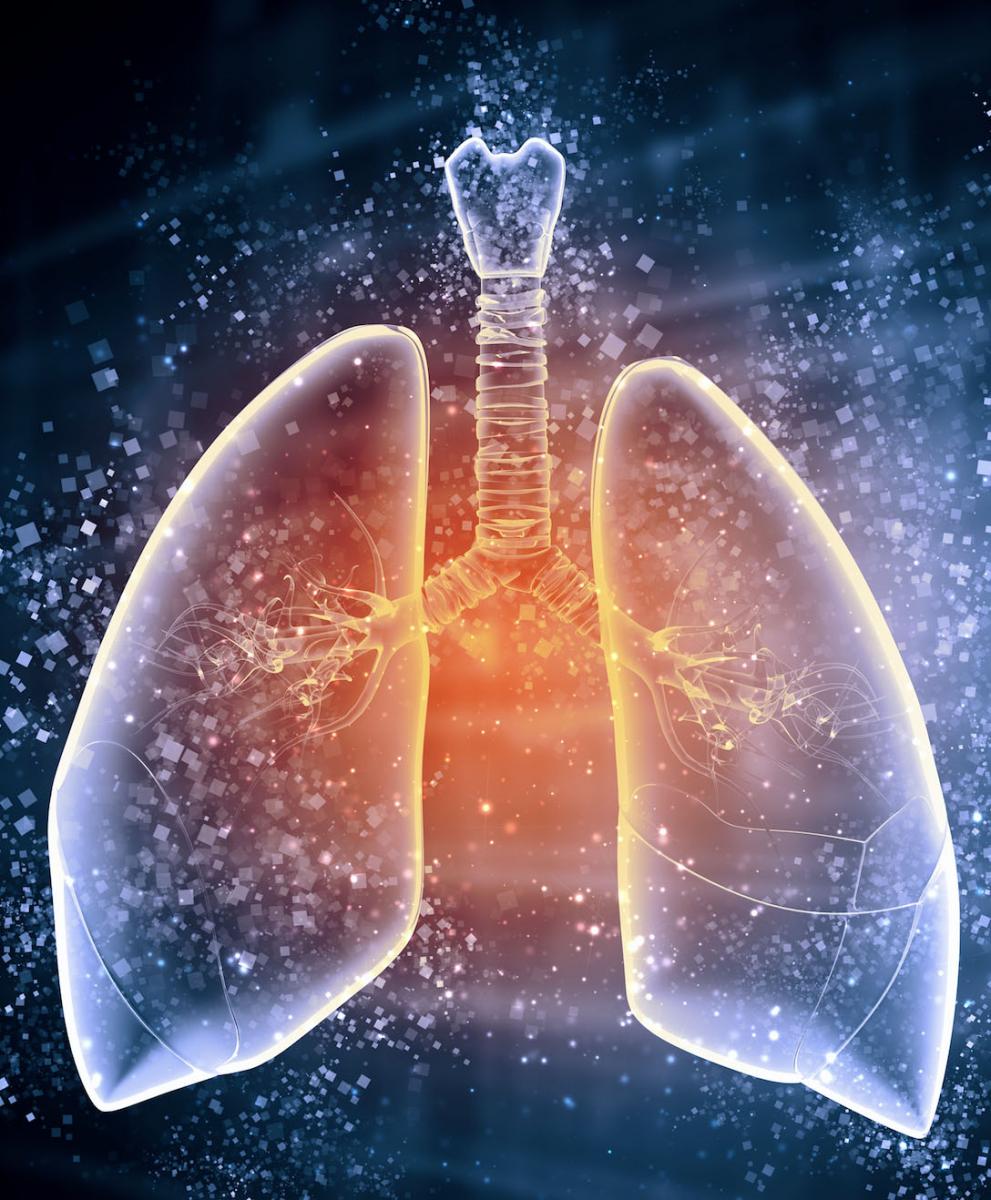Frontline Pembrolizumab Monotherapy Continues to Elicit Clinical Benefit vs Chemo in NSCLC
Five-year data from the phase 3 KEYNOTE-042 shows that patients with non–small cell lung cancer without EGFR/ALK alterations continue to elicit durable benefit with pembrolizumab monotherapy vs chemotherapy.

Pembrolizumab (Keytruda) monotherapy given in the first-line setting continued to demonstrate durable clinical benefit vs chemotherapy in patients with PD-L1–positive, locally advanced/metastatic non–small cell lung cancer (NSCLC) without EGFR/ALK alterations, according to 5-year results from the phase 3 KEYNOTE-042 study (NCT02220894).1
Findings were reported in the Journal of Clinical Oncology and showed the median follow-up time was 61.1 (range, 50.0-76.3) months and that overall survival (OS) outcomes favored pembrolizumab when compared with chemotherapy regardless of PD-L1 TPS, with estimated 5-year OS rates with pembrolizumab of 21.9% for patients with PD-L1 tumor proportion score (TPS) ≥ 50%, 19.4% with PD-L1 TPS ≥ 20%, and 16.6%, PD-L1 TPS ≥ 1%, respectively.
“With > 5 years of follow-up, first-line pembrolizumab monotherapy was associated with substantially longer OS, durable response, and prolonged PFS2 compared with platinum-based chemotherapy in patients with PD-L1–positive locally advanced/metastatic NSCLC with no EGFR/ALK alterations. Longer-term follow-up continues to show a manageable safety profile of pembrolizumab with fewer treatment-related AEs than chemotherapy and no new safety signals,” wrote study authors led by Gilberto de Castro Junior, MD, PhD, Instituto do Câncer do Estado de São Paulo, São Paulo, Brazil.
The trial randomized patients in a 1:1 ratio to receive pembrolizumab 200 mg once every 3 weeks intravenously or carboplatin area under the curve of 5 or 6 mg/mL/min plus investigator's choice of paclitaxel 200 mg/m2 once every 3 weeks for 6 cycles or pemetrexed 500 mg/m2, followed by optional pemetrexed 500 mg/m2 once every 3 weeks. Patients continued to receive treatment with pembrolizumab for up to 35 cycles or until confirmed complete response (CR) per RECIST v1.1, disease progression (PD), intolerable toxicity, investigator's decision, or patient withdrawal.
Patients who were assigned to pembrolizumab were eligible for second-course pembrolizumab (up to 17 cycles) upon PD per investigator assessment if they had stopped initial treatment after confirmed CR or completed 35 cycles of pembrolizumab while in SD or better, and had not received any anticancer treatment since the last pembrolizumab dose.
The primary end points of the study were overall survival in PD-L1 TPS ≥ 50%, ≥ 20%, and ≥ 1%, with secondary end points of progression-free survival (PFS), objective response rate (ORR), and safety. Exploratory end points of the trial include PFS2.
Enrollment was open to patients with locally advanced/metastatic NSCLC without EGFR/ALK alterations and with PD-L1 TPS ≥ 1%.
A total of 1274 patients were randomly assigned with 637 into the pembrolizumab arm and 637 in the chemotherapy arm. Among the patients who received pembrolizumab, 46.2% were given subsequent anticancer therapy (5.0% received anti–PD-[L]1 therapy), vs 49.3% (23.1% received anti–PD-[L]1) for those who were given chemotherapy.
The time of median follow-up was 61.1 (range, 50.0-76.3) months. OS rates favored treatment with pembrolizumab for TPS ≥ 50%, (HR, 0.68; 95% CI, 0.57-0.81) TPS ≥ 20% (HR, 0.75; 95% CI, 0.64-0.87), and TPS ≥ 1% (HR, 0.79; 95% CI, 0.70-0.89). The estimated 5-year OS rates with pembrolizumab were 21.9%, 19.4%, and 16.6%, respectively.
Regarding safety, there were no new toxicities identified. For patients with PD-L1 TPS ≥ 1%, the incidence of treatment-related adverse events (AEs) was 63.8% in the pembrolizumab group vs 90.2% in the chemotherapy group. No new fatal treatment-related AEs were observed in either treatment group. Immune-mediated AEs and infusion reactions were observed in 27.5% of patients in the pembrolizumab group and 7.6% of patients in the chemotherapy group.
Exposure-adjusted treatment-related AEs and immune-mediated AEs and infusion reaction rates generally decreased over time in both the pembrolizumab and chemotherapy group. Exposure-adjusted treatment-related AEs included fatigue (8.0% with pembrolizumab vs 16.7% with chemotherapy), hypothyroidism (10.8% vs 0.3%), decreased appetite (6.3% vs 17.6%), anemia (5.5% vs 38.0%), nausea (4.9% vs 30.1%), vomiting (2.4% vs 15.8%), constipation (1.3% vs 11.2%), neutropenia (0.8% vs 14.5%), decreased white blood cell count (0.5% vs 12.2%), alopecia (0.3% vs 22.1%), decreased neutrophil count (0.3% vs 14.5%), and decreased platelet count (0.3% vs 10.7%).
For the 102 patients who completed 35 cycles of pembrolizumab, the ORR was 84.3% and was 15.2% among 33 patients who received second-course pembrolizumab.
Treatment-related AEs occurred in 81.4% of these patients and 11.8% had grade 3-5 events. Immune-mediated AEs and infusion reactions occurred in 40.2% of patients. Further, grade 3 events occurred in 5.9%, including 3 patients with colitis, 2 with severe skin reaction, and 1 with hypophysitis. No AEs were grade 4 or 5 in severity.